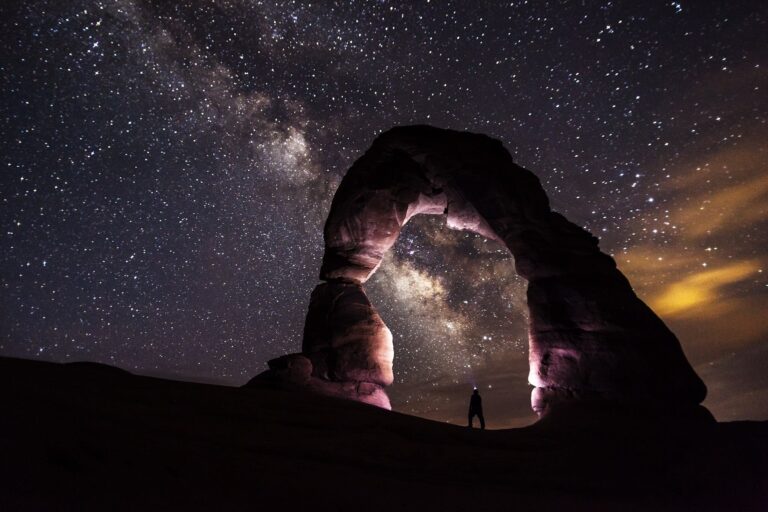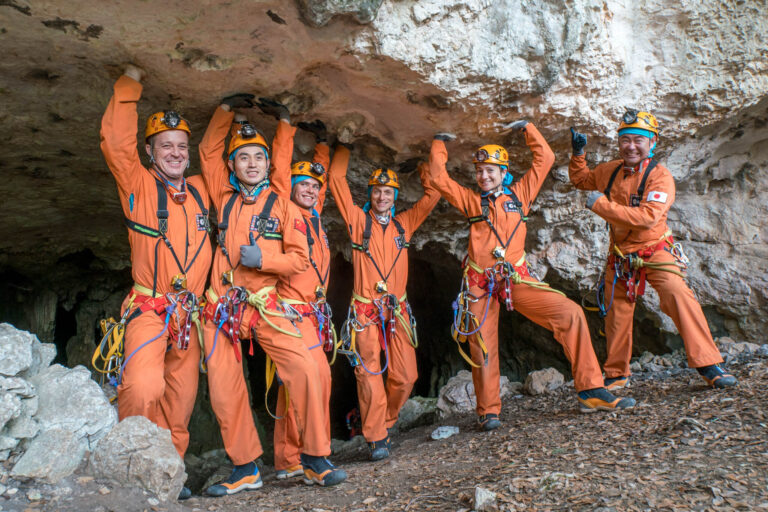How Often Are Meteor Showers?
Meteor showers occur when debris from asteroids or comets enters Earth’s atmosphere, creating bright streaks of light known as shooting stars. These celestial events are a mesmerizing sight for stargazers and astronomers alike, capturing our imagination and reminding us of the vastness of the universe.
When it comes to the frequency of meteor showers, they occur throughout the year, but their visibility and intensity can vary. Some meteor showers are predictable and occur annually, while others are sporadic and less frequent. The frequency of meteor showers depends on the orbit of their parent comets or asteroids and the debris fields they leave behind.
One of the most famous meteor showers is the Perseids, which can be observed every year in August. This meteor shower originates from the debris left by the comet known as Swift-Tuttle. The Orionids, associated with Halley’s Comet, offer another dazzling display in October, while the Geminids, caused by the asteroid 3200 Phaethon, can be seen in December.
During peak activity, meteor showers can produce an impressive number of shooting stars. For example, the Leonids meteor shower, which occurs in November, has been known to produce hundreds of meteors per hour during its peak. The Quadrantids, on the other hand, are known for their short-lived but intense displays, with rates reaching up to 120 meteors per hour.
To witness the beauty of a meteor shower, it is important to find the ideal viewing conditions. Dark, rural locations far from city lights offer the best visibility, allowing the faintest meteors to be seen. Additionally, the pre-dawn hours are the prime time for meteor watching, as the radiant point of the shower rises higher in the sky.
Factors such as moonlight and weather conditions can impact the visibility of meteor showers. A bright moon can wash out the fainter meteors, so it is advisable to plan your meteor watching during a new moon or when the moon is in its crescent phase. Clear, cloudless skies also enhance the viewing experience, ensuring a clearer view of the meteor shower.
It is worth noting that while meteor showers are a common occurrence, meteorites are relatively rare. Meteorites are larger meteors that survive their journey through the atmosphere and land on Earth’s surface. They provide important insights into the composition of asteroids and comets and are highly valuable for scientific research.
Key Takeaways:
- Meteor showers occur when debris from asteroids or comets enters Earth’s atmosphere, creating shooting stars.
- Frequency and intensity of meteor showers can vary, with some occurring annually and others more sporadically.
- Famous meteor showers include the Perseids in August, the Orionids in October, and the Geminids in December.
- Meteor showers can produce impressive displays with rates of hundreds of meteors per hour during peak activity.
- Optimal viewing conditions include dark, rural locations away from city lights and the pre-dawn hours.
- Moonlight and weather conditions can affect visibility, so selecting the right time and checking the lunar phase are important.
- Meteorites, which are larger meteors that reach Earth’s surface, are relatively rare and offer valuable scientific insights.
Types of Meteor Showers
Meteor showers are named after the constellations from which they appear to originate, with well-known examples including the Leonids, Perseids, Orionids, Quadrantids, and Geminids. These meteor showers are eagerly anticipated by stargazers around the world due to their spectacular displays of shooting stars.
The Leonids, known for their fast and bright meteors, occur in November when the Earth passes through the debris left by Comet Tempel-Tuttle. The Perseids, occurring in August, are one of the most popular meteor showers, producing up to 100 meteors per hour during their peak. They are associated with the Swift-Tuttle comet. The Orionids, associated with Halley’s Comet, can be observed in October, with around 20 meteors per hour at their peak.
The Quadrantids, named after the obsolete constellation Quadrans Muralis, are active in early January and are known for their brief but intense bursts of activity, with up to 120 meteors per hour. Lastly, the Geminids, which occur in December, are renowned for their multicolored meteors and can produce up to 120 meteors per hour during their peak.
| Meteor Shower | Peak Activity | Meteor Count | Associated Constellation |
|---|---|---|---|
| Leonids | November | Up to 100 meteors per hour | Leo |
| Perseids | August | Up to 100 meteors per hour | Perseus |
| Orionids | October | Around 20 meteors per hour | Orion |
| Quadrantids | January | Up to 120 meteors per hour | Quadrans Muralis |
| Geminids | December | Up to 120 meteors per hour | Gemini |
Frequency and Timing of Meteor Showers
The frequency and timing of meteor showers depend on when Earth passes through the debris path, resulting in different meteor showers at different times of the year. These celestial events offer a captivating display of shooting stars, captivating both amateur stargazers and seasoned astronomers alike. With their varying brightness and intensity, meteor showers provide a unique opportunity to witness the wonders of the night sky.
Astronomers have identified several well-known meteor showers that occur annually. The Leonids, for example, grace the night sky every November, while the Perseids put on a breathtaking show in mid-August. The Orionids, Quadrantids, and Geminids also contribute to the ever-changing tapestry of meteor showers throughout the year. Each shower is named after the constellation from which it appears to originate, making them a distinctive and memorable experience for skywatchers.
During peak activity, meteor showers can produce thousands of meteors per minute, creating a truly awe-inspiring spectacle. However, it’s important to note that the frequency and intensity of meteor showers can vary widely. Some showers, like the Perseids, are reliably consistent year after year, while others may surprise with unexpected bursts of activity. Keeping track of meteor shower schedules and forecasts can greatly increase the chances of witnessing these celestial marvels at their peak.
Timing is Everything
To maximize the chances of seeing a meteor shower, it’s crucial to know the right time and location. Meteor showers are typically best observed in dark, rural areas away from the bright city lights. The pre-dawn hours, when the sky is darkest, offer the greatest visibility for meteor watching. However, factors such as moonlight and weather conditions can impact the viewing experience. A clear and moonless night sky provides the ideal backdrop for meteor shower observation, allowing the meteors to shine brightly against the darkness.
So, mark your calendars and prepare for a night of celestial wonder. Whether you’re a seasoned astronomer or a casual skygazer, meteor showers offer a breathtaking glimpse into the vastness of the universe. Remember to find a dark location, check the forecast, and keep your eyes peeled for the shooting stars that paint the night sky. The beauty and mystery of meteor showers await those who are patient and fortunate enough to witness them.
| Meteor Shower | Approximate Date | Peak Activity |
|---|---|---|
| Leonids | November | Mid-November |
| Perseids | August | Mid-August |
| Orionids | October | Late-October |
| Quadrantids | January | Early-January |
| Geminids | December | Mid-December |
Best Time and Locations for Meteor Shower Observation
For optimal meteor shower observation, it is recommended to find dark, rural locations away from city lights and observe during the pre-dawn hours. The darkness of the sky greatly enhances the visibility of meteors, allowing you to witness the celestial spectacle in all its glory.
When selecting a location, consider finding an open area with an unobstructed view of the sky. This will minimize any interference from buildings, trees, or other obstacles that may hinder your visibility. A high vantage point, such as a hill or mountainous area, can also provide a wider field of view, allowing you to observe more meteors as they streak across the sky.
It is worth noting that light pollution from nearby cities or towns can significantly diminish your chances of seeing meteor showers. To combat this, consult a light pollution map to identify areas with the least amount of artificial light. These dark sky locations offer the best conditions for meteor shower observation, as the absence of light pollution allows even the faintest meteors to be visible.
Weather conditions and moonlight
When planning your meteor shower observation, it is important to consider the weather conditions. Clear skies are essential for optimal visibility, as clouds can obstruct your view of the meteors. Check the weather forecast in advance to ensure that you choose a night with minimal cloud cover.
In addition to weather conditions, moonlight can also affect the visibility of meteor showers. The brightness of the moon can wash out the fainter meteors, making them harder to spot. To maximize your chances of seeing as many meteors as possible, try to schedule your observation during a moonless or low-moon phase. This will provide a darker sky, allowing the meteors to stand out against the backdrop of the night.
| Meteor Shower | Peak Activity | Brightness |
|---|---|---|
| Leonids | Mid-November | Variable (bright to faint) |
| Perseids | Mid-August | Bright |
| Orionids | Mid-to-late October | Variable (bright to faint) |
| Quadrantids | Early January | Variable (bright to faint) |
| Geminids | Mid-December | Bright |
In conclusion, to witness the breathtaking beauty of meteor showers, it is crucial to find optimal viewing conditions. Choose dark, rural locations away from city lights, preferably on a hill or mountain for an unobstructed view. Check weather forecasts to ensure clear skies and try to observe during moonless or low-moon phases for maximum visibility. By following these guidelines and understanding the characteristics of specific meteor showers, you can enhance your chances of experiencing a truly unforgettable celestial event.
Rarity of Meteorites
While meteor showers produce an abundance of shooting stars, meteorites that reach the Earth’s surface are relatively rare. These larger meteors survive their journey through the atmosphere and make a spectacular impact when they land. Their rarity adds to their intrigue and makes them highly sought after by collectors and scientists alike.
According to scientific estimates, only a small fraction of the meteoroids that enter Earth’s atmosphere actually become meteorites. Most burn up completely due to the intense heat generated during their high-speed passage through the atmosphere. Only those meteoroids that are large enough and composed of robust materials manage to withstand the extreme conditions and reach the Earth’s surface.
The rarity of meteorites is also attributed to the vastness of space and the relatively small size of our planet. Despite the countless meteoroids that constantly bombard Earth’s atmosphere, the chances of any one meteorite landing in a specific location are incredibly slim. This makes the discovery of a meteorite a truly remarkable event that captures the attention of scientists and the public.
| Meteorite Types | Rarity |
|---|---|
| Achondrites | Relatively common |
| Chondrites | More common |
| Iron meteorites | Less common |
| Stony-iron meteorites | Rare |
Meteorites hold valuable information about the early Solar System, their composition shedding light on the processes that occurred billions of years ago. Scientists study meteorites to gain insights into the formation of planets, the composition of asteroids and comets, and even the potential for life beyond Earth. Each meteorite that is recovered represents a unique piece of cosmic history, making their scarcity all the more significant.
Conclusion
Meteor showers offer a fascinating glimpse into the cosmic world, showcasing the frequency and beauty of shooting stars in our night sky. These celestial events occur when debris from asteroids or comets enters Earth’s atmosphere, creating bright streaks of light that captivate our attention.
Named after the constellations from which they appear to originate, meteor showers can be observed at different times of the year. This depends on when Earth passes through the debris path left behind by these celestial wanderers. Some of the well-known meteor showers include the Leonids, Perseids, Orionids, Quadrantids, and Geminids, each with its own unique characteristics.
The brightness and frequency of meteor showers can vary significantly. Some showers produce thousands of meteors per minute during their peak activity, transforming the night sky into a dazzling display of celestial fireworks. To witness this magical spectacle at its best, it is recommended to find a dark, rural location away from city lights and observe during the pre-dawn hours when the sky is at its darkest.
However, there are factors that can affect the visibility of meteor showers. Moonlight can diminish the visibility by overpowering the fainter meteors, so it’s ideal to observe during a moonless night or when the moon is in its crescent phase. Additionally, weather conditions play a crucial role in the viewing experience. Clear skies offer the best visibility, while clouds can obstruct the view of these cosmic wonders.
It is important to note that while we often marvel at shooting stars during meteor showers, those are typically small specks of cosmic dust burning up in the atmosphere. Larger meteors that survive the journey through the atmosphere and reach the Earth’s surface are known as meteorites. These meteorites are relatively rare compared to the abundance of shooting stars observed during meteor showers, but they hold great scientific and historical significance.
FAQ
How often do meteor showers occur?
Meteor showers occur at different times of the year, depending on when Earth passes through the debris path. Some well-known meteor showers include the Leonids, Perseids, Orionids, Quadrantids, and Geminids.
What causes meteor showers?
Meteor showers are caused by debris from asteroids or comets entering Earth’s atmosphere and creating bright streaks of light, also known as shooting stars.
When is the best time to observe meteor showers?
Meteor showers are best observed in dark, rural locations during the pre-dawn hours. Factors such as moonlight and weather conditions can affect visibility.
How many meteors can be seen during a meteor shower?
The brightness and frequency of meteor showers can vary, with some showers producing thousands of meteors per minute during peak activity.
Are meteor showers rare?
Meteor showers are relatively common occurrences, but meteorites, which are larger meteors that reach the Earth’s surface, are relatively rare.
Which meteor showers are the most well-known?
Some well-known meteor showers include the Leonids, Perseids, Orionids, Quadrantids, and Geminids.






